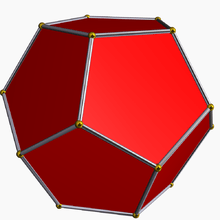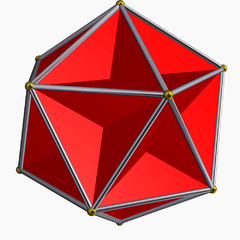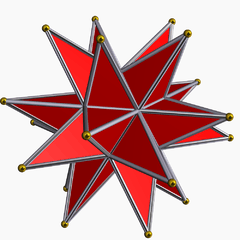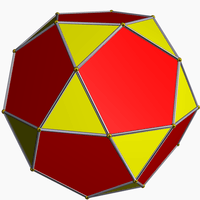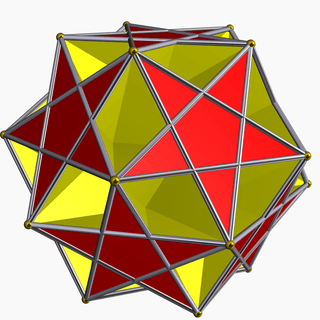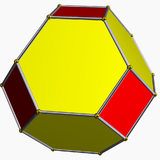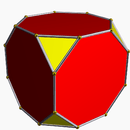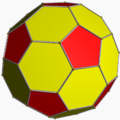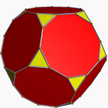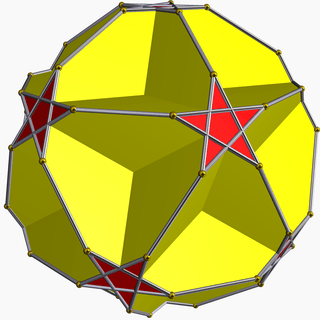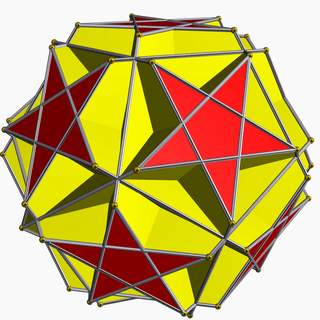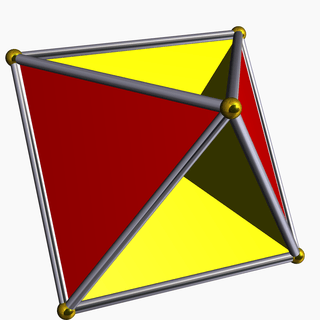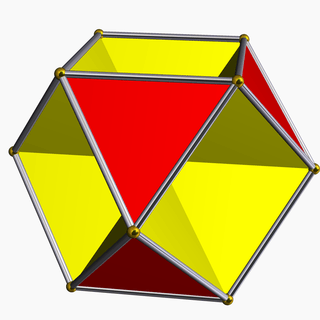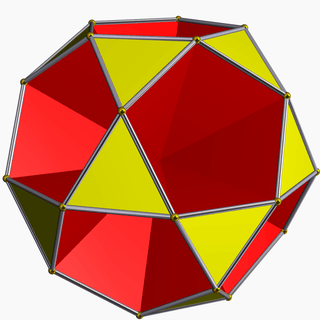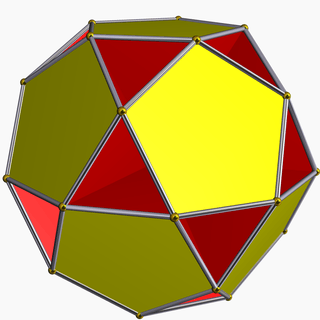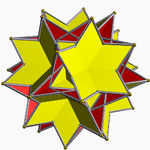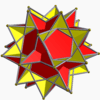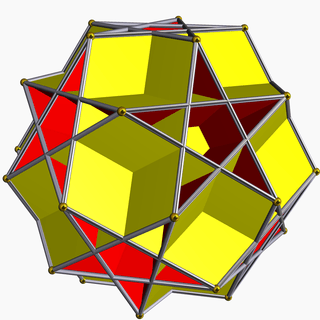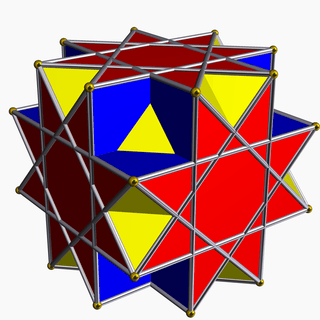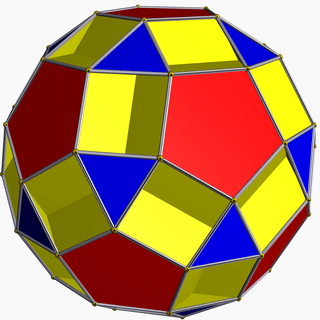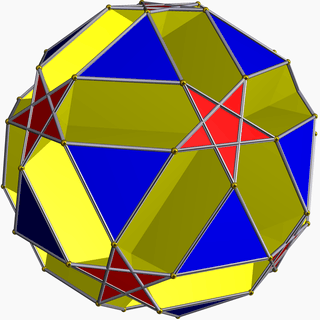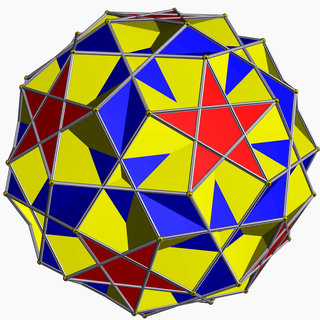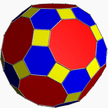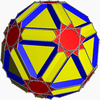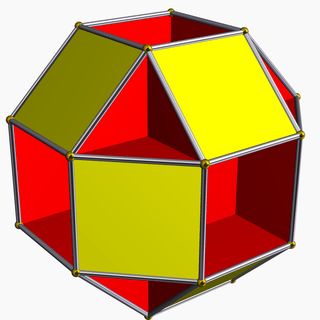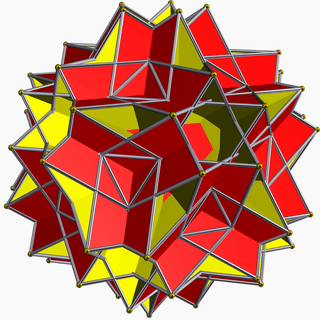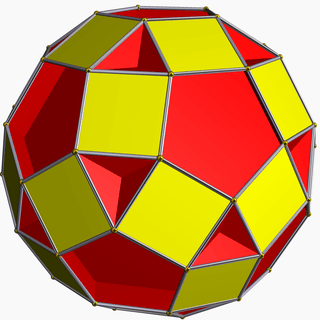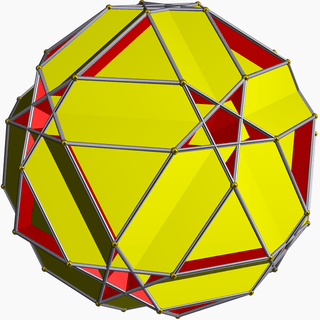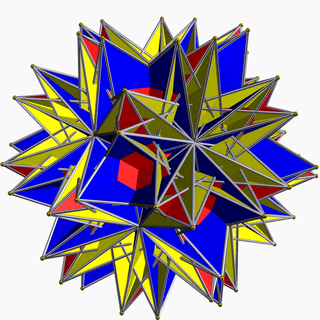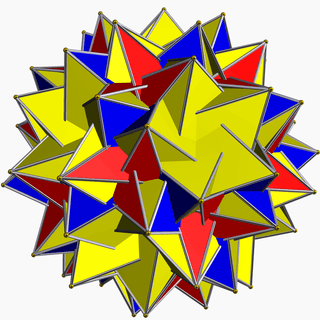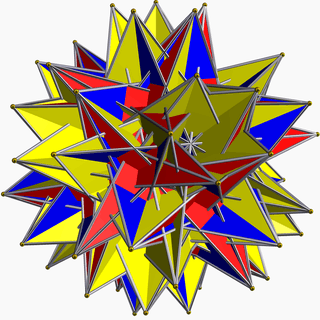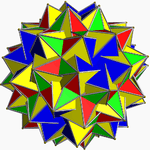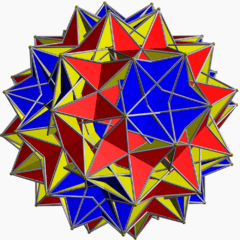List of uniform polyhedra by Wythoff symbol
| Polyhedron | |
| Class | Number and properties |
|---|---|
| Platonic solids |
(5, convex, regular) |
| Archimedean solids |
(13, convex, uniform) |
| Kepler–Poinsot polyhedra |
(4, regular, non-convex) |
| Uniform polyhedra |
(75, uniform) |
| Prismatoid: prisms, antiprisms etc. |
(4 infinite uniform classes) |
| Polyhedra tilings | (11 regular, in the plane) |
| Quasi-regular polyhedra |
(8) |
| Johnson solids | (92, convex, non-uniform) |
| Pyramids and Bipyramids | (infinite) |
| Stellations | Stellations |
| Polyhedral compounds | (5 regular) |
| Deltahedra | (Deltahedra, equilateral triangle faces) |
| Snub polyhedra |
(12 uniform, not mirror image) |
| Zonohedron | (Zonohedra, faces have 180°symmetry) |
| Dual polyhedron | |
| Self-dual polyhedron | (infinite) |
| Catalan solid | (13, Archimedean dual) |
There are many relations among the uniform polyhedra.
Here they are grouped by the Wythoff symbol.
Key
|
Image |
Regular
All the faces are identical, each edge is identical and each vertex is identical. They all have a Wythoff symbol of the form p|q 2.
Convex
The Platonic solids.
|
|
|
|
|
|
Non-convex
The Kepler-Poinsot solids.
|
|
|
|
|
Quasi-regular
Each edge is identical and each vertex is identical. There are two types of faces which appear in an alternating fashion around each vertex. The first row are semi-regular with 4 faces around each vertex. They have Wythoff symbol 2|p q. The second row are ditrigonal with 6 faces around each vertex. They have Wythoff symbol 3|p q or 3/2|p q.
|
|
|
|
|
|
|
|
|
Wythoff p q|r
Truncated regular forms
Each vertex has three faces surrounding it, two of which are identical. These all have Wythoff symbols 2 p|q, some are constructed by truncating the regular solids.
|
|
|
|
|
|
|
|
|
|
|
|
Hemipolyhedra
The hemipolyhedra all have faces which pass through the origin. Their Wythoff symbols are of the form p p/m|q or p/m p/n|q. With the exception of the tetrahemihexahedron they occur in pairs, and are closely related to the semi-regular polyhedra, like the cuboctohedron.
|
|
|
|
|
|
|
|
|
|
|
Rhombic quasi-regular
Four faces around the vertex in the pattern p.q.r.q. The name rhombic stems from inserting a square in the cuboctahedron and icosidodecahedron. The Wythoff symbol is of the form p q|r.
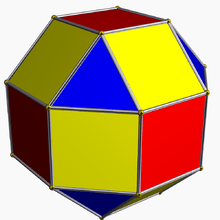 Rhombicuboctahedron |
|
|
|
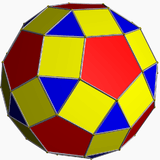 Rhombicosidodecahedron |
|
|
|
|
|
|
|
|
|
|
|
Even-sided forms
Wythoff p q r|
These have three different faces around each vertex, and the vertices do not lie on any plane of symmetry. They have Wythoff symbol p q r|, and vertex figures 2p.2q.2r.
|
|
|
| |
|
|
|
|
|
Wythoff p q (r s)|
Vertex figure p.q.-p.-q. Wythoff p q (r s)|, mixing pqr| and pqs|.
|
|
|
|
|
|
|
|
|
Snub polyhedra
These have Wythoff symbol |p q r, and one non-Wythoffian construction is given |p q r s.
Wythoff |p q r
| Symmetry group | |||
|---|---|---|---|
| O |
|
||
| Ih |
|
|
|
| I |
|
|
|
| I |
|
|
|
| I |
|
|
Wythoff |p q r s
| Symmetry group | |
|---|---|
| Ih |
|

.svg.png)


